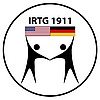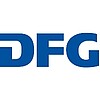A1 (2013 - 2016) – Complement regulates Th17 development in experimental allergic asthma
Publications:
Project:
C5a exerts its various biologic functions through activation of the two cognate receptors C5aR and C5L2. Both receptors regulate the development of Th2 maladaptive immune response toward several allergens. In addition C5-, C5aR- and C5L2-deficient mice show increased Th17 skewing in HDM-mediated experimental allergic asthma through an IL-23-dependent mechanism. Mechanistically, we have shown that HDM stimulation of BM-derived DCs (BMDC) lacking C5, C5aR, or C5L2 produces more IL-23 and promotes robust Th17 lineage commitment. Similarly, stimulation of spleen DCs from C5aR-/- mice with a TLR2 agonist and OVA induces increased IL-6 and IL-23 leading to enhanced Th17 skewing. This suggests that C5a/C5L2 signalling limits Th17 development. In contrast, in macrophages, crosstalk between C5aR and GM-CSF and/or TLR signaling drives the development of Th17 cells. Thus, depending on which APC drives T cell activation, C5aR and C5L2 can either promote or suppress Th17 development. However, the exact mechanisms by which C5aR and C5L2 mediate the opposing effects in DCs and macrophages are incompletely understood.
Aims:
1. Dissect the importance of C5aR and C5L2 on pulmonary APC recruitment in HDM-mediated allergic asthma.
2. Identify how C5aR and C5L2 signaling in pulmonary APCs affect Th17 cell differentiation.
3. Define the molecular interactions between C5aR and C5L2 in pulmonary APCs under steady state conditions and during the allergic effector phase.







